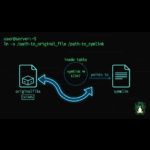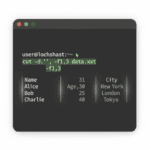The Real Truth About DeFi Yield Farming in 2025
Let me tell you about the time I made $47,000 in three months yield farming, then lost $32,000 in 48 hours during a protocol exploit. That’s DeFi yield farming in a nutshell – it’s the most profitable and dangerous game in crypto right now.
I’ve been deep in the DeFi trenches since 2020. Started with $10,000, peaked at $280,000, got absolutely destroyed multiple times, and now I’m consistently pulling 30-40% annual returns with strategies that actually work. I’m going to share everything I’ve learned, including the stuff that cost me six figures to figure out.
What DeFi Yield Farming Actually Is (Without the Marketing BS)
Yield farming is basically being the casino instead of the gambler. You provide liquidity to DeFi protocols – lending platforms, decentralized exchanges, synthetic asset protocols – and they pay you for it. Think of it as renting out your crypto to protocols that need it to function.
Here’s what’s really happening: You’re getting paid to take risks that traditional market makers won’t touch. The returns are high because the risks are real. Anyone telling you otherwise is either lying or hasn’t been rugged yet.
The mechanics are simple: You deposit crypto into smart contracts, those contracts use your funds to facilitate trading/lending/borrowing, and you get a cut of the fees plus additional token rewards. It’s like owning a piece of the infrastructure that powers decentralized finance.

My Current Yield Farming Strategy That Actually Works
After losing money on every possible DeFi disaster – rug pulls, impermanent loss, protocol hacks, death spirals – here’s the strategy I use now that consistently generates 30-40% APY with manageable risk.
The Conservative Core (60% of Portfolio)
Stablecoin Lending on Blue Chips: I keep 60% of my DeFi portfolio in stablecoin strategies on battle-tested protocols. Currently farming:
– USDC/USDT on Aave: 5-8% APY
– DAI in MakerDAO’s DSR: 6% APY
– Curve 3pool (USDC/USDT/DAI): 4-12% APY depending on CRV rewards
These aren’t sexy returns, but they’re reliable. I’ve never lost money on these positions in three years. The smart contract risk is minimal – these protocols have billions locked and have survived every market condition.
The Growth Positions (30% of Portfolio)
Blue Chip Liquidity Provision: I provide liquidity for major pairs on established DEXs:
– ETH/USDC on Uniswap V3 (concentrated liquidity): 15-25% APY
– ETH/BTC on Balancer: 10-15% APY
– Liquid staking derivatives (stETH/ETH on Curve): 8-12% APY
The key here is concentrated liquidity on Uniswap V3. By actively managing my price ranges, I capture 5-10x more fees than V2 pools. Yes, it requires daily management, but the returns justify the effort.
The Degen Plays (10% of Portfolio)
High-Risk, High-Reward Farms: This is my gambling money. New protocols, leveraged positions, exotic strategies. Currently:
– Pendle PT/YT strategies: 40-80% APY
– GMX liquidity provision: 30-50% APY
– New protocol incentives (rotating): 100-500% APY
I expect to lose most of this 10%. When something hits, it pays for all the losses and then some. Last month, I caught a new Arbitrum protocol offering 400% APY that lasted three weeks before emissions dropped. Made $8,000 on a $5,000 position.
How to Start Yield Farming Without Getting Destroyed
Here’s exactly how to start if you’ve never yield farmed before. This is the path that would have saved me $100,000 in tuition fees to the market.
Step 1: Start with $500 on a Low-Cost Chain
Don’t start on Ethereum mainnet unless you have $10,000+. Gas fees will eat you alive. Start on:
– Arbitrum: Low fees, mature ecosystem
– Polygon: Ultra-low fees, decent protocols
– Optimism: Growing ecosystem, reasonable fees
Put that $500 into a simple stablecoin pool on Aave or Compound. Learn how to bridge funds, interact with contracts, and track your positions. This is your training ground.
Step 2: Master One Protocol Before Moving On
Pick one protocol and learn everything about it. I recommend starting with Aave because it’s simple, safe, and profitable. Learn:
– How lending/borrowing rates work
– What affects APY changes
– How to calculate real returns after gas
– Risk parameters and liquidation mechanics
Spend at least a month on one protocol before adding another. Most beginners try to farm everywhere at once and end up losing money to fees and mistakes.
Step 3: Build Your Risk Management System
This is where most farmers fail. You need rules, and you need to follow them religiously. My system:
– Never put more than 20% in any single protocol
– Never use more than 2x leverage (learned this the hard way)
– Always keep 30% in stables for opportunities/emergencies
– Take profits monthly – compound 50%, withdraw 50%
If you don’t have a risk management system, you’re not farming – you’re gambling. And the house always wins eventually. Check out my thoughts on risk management strategies that actually matter – the principles apply perfectly to DeFi.
The Hidden Costs Nobody Talks About
Let me tell you what yield farming actually costs beyond the headline APY numbers. This is the stuff that turns 100% APY into 20% real returns.
Gas Fees Are a Killer
On Ethereum mainnet, entering and exiting a position costs $50-200 in gas. Claiming rewards? Another $30-50. Rebalancing? $100+. I’ve paid over $50,000 in gas fees since 2020.
Rule of thumb: Don’t farm on Ethereum with less than $10,000. The gas fees will destroy your returns. I once spent $180 in gas to claim $47 in rewards because I’m an idiot.
Impermanent Loss Is Real
Everyone warns about impermanent loss, but nobody explains what it actually feels like. Here’s a real example from my portfolio:
Provided $10,000 (50% ETH, 50% USDC) to Uniswap when ETH was $2,000. ETH pumped to $3,000. My impermanent loss? $585. The pool only earned $310 in fees. I lost money while ETH went up 50%.
The only way to beat impermanent loss is stable pairs (USDC/USDT) or correlated assets (stETH/ETH). Everything else is a bet that fees will outpace divergence.
Smart Contract Risk Is Everywhere
I’ve been in three protocol hacks. Lost $32,000 in one, $8,000 in another, and got lucky on the third (withdrew 12 hours before the exploit). Even “safe” protocols get hacked. Even audited code has bugs.
This is why I never put more than 20% in any protocol, no matter how safe it seems. Diversification isn’t just about returns – it’s about survival.
The Protocols I Actually Trust with My Money
After three years and dozens of protocols, here are the only ones I trust with significant capital:
Tier 1: Battle-Tested Blue Chips
Aave: The most robust lending protocol. Never been hacked, excellent risk management, consistent yields. I keep 25% of my portfolio here.
Curve: The stablecoin king. Complex but profitable. The 3pool is my safe haven during market volatility.
Uniswap V3: Concentrated liquidity is a game-changer if you actively manage positions. I make more in fees here than anywhere else.
MakerDAO: The OG DeFi protocol. DSR (Dai Savings Rate) is the safest yield in DeFi.
Tier 2: Established but Higher Risk
GMX: Perpetuals DEX with real yield. GLP token earns 30-50% APY from trader losses. Risky but profitable.
Balancer: Great for blue chip pairs. The 80/20 pools reduce impermanent loss while maintaining upside.
Pendle: Complex yield tokenization. Steep learning curve but 40-80% APY on mature strategies.
Tier 3: Degen Territory
New protocols with token incentives. I rotate through these monthly, never staying long. It’s basically arbitrage opportunities but with smart contract risk instead of execution risk.
My Worst Yield Farming Disasters (And What I Learned)
Let me share my most expensive lessons so you don’t have to learn them yourself.
The $32,000 Hack
May 2021. Had $40,000 in a yield aggregator that promised to auto-compound returns. The protocol got exploited through a reentrancy bug. Lost 80% of the position overnight.
Lesson: Complexity adds risk. The fancier the protocol, the more attack vectors exist. Stick to simple, proven strategies.
The Impermanent Loss Massacre
Provided liquidity for a small cap token paired with ETH. Token dumped 90% in two weeks. My $10,000 position became $1,800. The 300% APY didn’t matter when the principal evaporated.
Lesson: High APY on volatile pairs is a trap. You’re betting on price stability, not just collecting fees.
The Stablecoin That Wasn’t Stable
Had $25,000 in Iron Finance’s TITAN-USDC pool. TITAN went to zero in 24 hours. Lost everything. This was before UST – I learned early that algorithmic stables are time bombs.
Lesson: If a stablecoin pays more than 20% APY, it’s not stable. There’s no free lunch in DeFi.
Tools You Actually Need for Yield Farming
Forget the fancy paid tools. Here’s what I actually use every day:
DeBank: Tracks all positions across all chains. Free and comprehensive. Shows your real-time P&L.
DeFiLlama: Find new farms, compare yields, check TVL. The yields page is my morning newspaper.
Zapper.fi: Great for complex position management and finding new opportunities.
Etherscan/Similar: Learn to read transactions. Understanding what’s happening on-chain is crucial for safety.
Spreadsheet: Track everything manually. Date entered, amount, protocol, current value, fees paid. You need to know your real returns.
The Mental Game of Yield Farming
This is what nobody talks about but everyone struggles with. Yield farming will mess with your head in ways regular trading doesn’t.
Watching your positions 24/7 is exhausting. Unlike traditional markets, DeFi never closes. I’ve woken up at 3 AM to check positions during volatile periods. It’s not healthy.
The constant optimization temptation is real. There’s always a higher yield somewhere. I used to jump between farms chasing 10% higher APY, losing money to fees and missing the best opportunities by being impatient.
Protocol FOMO hits different. When everyone’s making 500% APY on some new farm and you’re “only” making 30% on Aave, it feels like you’re losing. You’re not. Most of those 500% APY farms become 5% APY (or zero) within weeks.
What’s Actually Working in 2025
The yield farming landscape has matured significantly. Here’s what’s actually profitable right now:
Real Yield is King: Protocols sharing actual revenue (not just token emissions) are sustainable. GMX, Gains Network, and similar “real yield” protocols are where smart money lives.
Liquid Staking Derivatives: The stETH/ETH ecosystem is massive and profitable. Multiple strategies yielding 8-15% with minimal risk.
Concentrated Liquidity: Uniswap V3 and similar concentrated liquidity protocols offer 3-5x higher returns than V2 pools if actively managed.
Points Farming: New meta where protocols give points for activity that later convert to tokens. Blast, EigenLayer, and others are distributing billions in rewards.
My Daily Yield Farming Routine
Here’s exactly what I do every day to manage my farms:
Morning (5 minutes):
– Check DeBank for position values
– Quick scan of DeFiLlama yields page for opportunities
– Check for any protocol announcements/issues
Evening (15 minutes):
– Rebalance Uniswap V3 positions if needed
– Claim and compound rewards (if gas is reasonable)
– Update tracking spreadsheet
– Research one new opportunity
Weekly (1 hour):
– Deep review of all positions
– Calculate real returns after fees
– Adjust strategy based on market conditions
– Take profits according to plan
This routine keeps me profitable without consuming my life. The key is consistency, not constant activity.
The Future of Yield Farming
Yield farming isn’t going away, but it’s evolving. The days of 1000% APY on random food tokens are over (thank god). Here’s where we’re heading:
Institutional adoption is coming. Major funds are already farming with hundreds of millions. This will compress yields but add stability.
Cross-chain farming is the next frontier. Protocols that aggregate yield across multiple chains will dominate. The money will follow the highest risk-adjusted returns regardless of chain.
Automated strategies will become standard. Managing positions manually is inefficient. The winners will use sophisticated automation while maintaining security.
Should You Start Yield Farming?
If you can handle 20-30% drawdowns without panicking, if you’re willing to spend time learning, and if you can start small and be patient – absolutely yes. DeFi yield farming is the best risk/reward opportunity in crypto right now.
But if you’re looking for passive income, if you can’t afford to lose your investment, or if you don’t have time to actively manage positions – stick to simple staking or just hold spot.
The difference between successful yield farmers and casualties isn’t intelligence or capital – it’s discipline and risk management. Just like with crypto options trading, the complexity can generate massive returns or massive losses.
Start small, learn constantly, and never farm with money you need. The opportunities in DeFi are real, but so are the risks. I’ve made life-changing money yield farming, but I’ve also lost more than most people make in a year.
The secret? Survive long enough to compound your wins. In DeFi, not losing money is more important than making money. The yields are high enough that simply staying alive makes you rich.
Welcome to the farm. Don’t get rugged.







